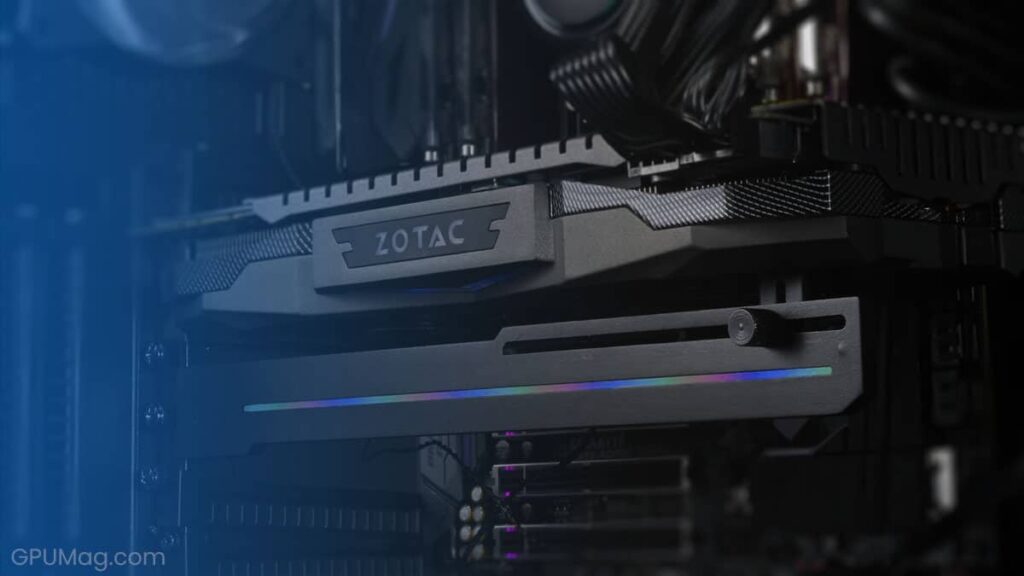In computer hardware troubleshooting, errors are common. One such perplexing issue that users may face is the 718-514-6494 GPU BIOS Error.
The 718-514-6494 GPU BIOS Error indicates a problem with the firmware stored on the graphics card, potentially leading to system instability and graphical anomalies.
Let’s embark on a journey to unravel the mysteries behind this enigmatic error and empower users with the knowledge needed to address it effectively.
What Are Gpu BIOS?
GPU BIOS, or Graphics Processing Unit Basic Input/Output System, is firmware stored on the graphics card. It initializes the hardware and provides essential instructions for the GPU to function correctly.
Like a computer’s BIOS, the GPU BIOS plays a critical role in ensuring proper communication between the GPU and the rest of the system.
Identifying GPU BIOS Error:

1. Display Artifacts:
You might notice unusual graphical artifacts on your screen, such as flickering, screen tearing, or distorted images. These anomalies can be indicative of a problem with the GPU BIOS.
2. System Instability:
If your computer experiences frequent crashes, freezes, or reboots, especially during tasks that require heavy graphics processing, it could be a sign of a GPU BIOS error. BIOS-related issues may trigger the instability.
3. Error Messages During Boot-Up:
Sometimes, when you start your computer, you might encounter error messages indicating problems with the BIOS firmware. These messages typically appear during the boot-up process and may reference BIOS-related errors.
Common Causes Of GPU BIOS Error:
1. Corrupted Bios Firmware:
If the BIOS firmware on your GPU becomes corrupted due to software glitches, interrupted firmware updates, or malware infections, it can lead to BIOS errors.
2. Outdated GPU Drivers:
Using outdated or incompatible graphics drivers can create conflicts with the GPU BIOS, resulting in errors and instability.
3. Hardware Malfunction:
Physical damage to the graphics card, such as faulty components or poor connections, can hinder the proper functioning of the GPU BIOS, triggering errors.
4. Overclocking:
Overclocking the graphics card beyond its recommended limits can strain the GPU excessively, causing instability and potentially corrupting the BIOS firmware.
5. Power Supply Issues:
Inadequate or fluctuating power supply to the graphics card can disrupt the BIOS operation, leading to errors and system instability.
Read: M4ufree.Info – Ultimate Guide – 2024!
Troubleshooting GPU BIOS Error:

1. Restart Your Computer:
Begin by performing a simple system restart. Sometimes, a reboot can clear temporary glitches that may be causing the GPU BIOS error.
2. Update GPU Drivers:
Ensure that your graphics drivers are up-to-date. Visit the manufacturer’s website or use driver update software to download and install the latest drivers compatible with your graphics card.
3. Check Hardware Connections:
Please verify that your graphics card is securely seated in its PCIe slot and that all power connectors are properly attached. Loose connections can lead to hardware malfunctions and BIOS errors.
4. Reset Bios Settings:
Resetting the GPU BIOS settings to their default values can help eliminate any misconfigurations causing the error. Refer to your graphics card’s manual for instructions on how to perform a BIOS reset.
5. Flash Bios:
If the above steps fail to resolve the issue, you may need to flash the GPU BIOS. This involves updating or reinstalling the firmware to address problems or unlock additional features. Exercise caution when flashing BIOS, as improper procedures can damage your graphics card.
Preventing GPU BIOS Error:
1. Regular Maintenance:
Keep your system clean and well-ventilated to prevent overheating, which can damage GPU components and lead to BIOS errors. Regularly clean dust buildup from fans and heatsinks to ensure optimal airflow.
2. Avoid Overclocking:
While overclocking can boost performance, it also increases the likelihood of hardware instability and BIOS-related issues. Stick to recommended clock speeds to avoid potential problems with the GPU BIOS.
3. Use Reliable Power Supply:
Invest in a high-quality power supply unit (PSU) to ensure stable power delivery to your graphics card. Inadequate or fluctuating power can result in system instability and BIOS errors.
4. Update GPU Drivers:
Stay up-to-date with the latest GPU drivers provided by the manufacturer. Regularly check for driver updates and install them promptly to ensure compatibility and optimal performance.
5. Monitor Hardware Temperatures:
Utilize monitoring software to keep track of your GPU’s temperature and ensure it remains within safe operating limits. Excessive heat can degrade components and lead to BIOS errors over time.
6. Avoid Firmware Modifications:
Refrain from modifying or tampering with the GPU BIOS firmware unless necessary and performed by experienced professionals. Improper firmware modifications can result in irreversible damage to the graphics card.
Read: Zoomée – Full Guide In 2024!
Conclusion:
The 718-514-6494 GPU BIOS Error can be a frustrating obstacle for users, but it can be effectively resolved with the right knowledge and troubleshooting techniques.
By understanding the underlying causes, identifying symptoms, and following the appropriate troubleshooting steps, users can restore their GPU’s functionality and prevent future occurrences of the error.
Related Questions:
1. What Does GPU Bios Error Mean?
The GPU BIOS Error indicates a problem with the firmware stored on the graphics card, leading to system instability and graphical anomalies.
2. How Do I Fix Gpu Bios Error?
Troubleshooting may include restarting the computer, updating GPU drivers, checking hardware connections, resetting BIOS settings, and flashing BIOS firmware.
3. Can GPU Bios Error Cause Permanent Damage To The Graphics Card?
While GPU BIOS errors typically do not cause permanent damage, underlying hardware issues or improper troubleshooting procedures can damage the graphics card.
4. Is It Safe To Flash GPU Bios?
Flashing GPU BIOS carries risks, as improper procedures can brick the graphics card. Proceed with caution and follow manufacturer guidelines carefully.
5. How Often Should I Update GPU Drivers?
It’s advisable to regularly check for GPU driver updates, especially after major system updates or when experiencing performance issues.
Also Read:
